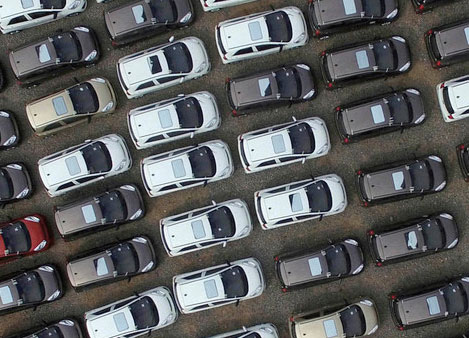EVs and the Supply Chain
Battery Logistics
Supplies for a Supply Chain
Electric vehicles (EVs) are rolling out of automaker plants around the world. But there’s a problem. The supply chain that has worked so well, for so long, building internal combustion machines, doesn’t work for EVs. So, what’s next?
As electric vehicles (EVs) begin to move out of the niche and into the mainstream, their manufacturers must grapple with all sorts of weighty production issues. The supply chain stands as one of the most vexing.

Simply put, car manufacturers can’t rely on their traditional, well-established and highly efficient sourcing, production and distribution patterns. They can’t necessarily turn to their longtime partners and major suppliers, either. In many cases, they must cast their lot with a new set of players, not to mention distinctly new materials and specific processes that sometimes have little in common with past practices.
“We’re talking about a completely different supply chain,” said Thomas Cullen, senior consultant at Britain’s Transport Intelligence, commonly known as Ti. “It is completely different because it’s totally different technology.”

EVs and the Supply Chain
One, of course, is based on the internal combustion engine, while the other is rooted in electric propulsion. A gasoline engine and a battery are completely different beasts.
Global plug-in EV sales remain a sliver of the overall car market. For the first eight months of this year, global EV sales topped 1.42 million, according to “Inside EVs.” That’s less than 3% of total car sales for the same period.
China has emerged as the dominant market for electric vehicles. Last year, EV sales in China topped one million, representing 8% of China’s overall car sales. Europe registered 386,000 and the US notched 361,000, according to “Inside EVs.”
Estimates for growth are all over the place. JP Morgan, for one, predicted that plug-in sales in 2025 will reach 8.4 million. (The bank’s estimate for hybrid sales is much larger.) In a lengthy report released in May, the International Energy Agency (IEA) predicted EV vehicle sales globally in 2030 could range from 23 million to 43 million.
As auto manufacturers grapple with new technologies, they are struggling to figure out the associated supply chain. It’s no easy task. “This changes from month to month. It’s an incredibly dynamic situation,” said Cullen, a logistician who has researched and written extensively on the subject, perhaps more than any one individual. Car manufacturers will “admit that there’s an extraordinary degree of uncertainty,” he said.
Cullen cited the issue of certain microprocessors. To begin with, auto manufacturers find themselves dealing with companies they don’t necessarily know. And they quickly discover they’re no longer king of the hill, when it comes to buying power. “They are now comparatively small purchasers of such products compared to the large consumer electronics manufacturers,” Cullen explained. “This illustrates a completely new dynamic on the supply chain.”
With electric propulsion, the battery is at the heart of the electric car. It’s also by far the most expensive component. And, while it’s been shrinking in cost as well as becoming more efficient, it’s still 33% of the total price of a midsized electric vehicle, according to research by BloombergNEF.


_-_28de80_-_d88095865f9f1cbb4ecdd37edf61c63efd603428_lqip.png)

